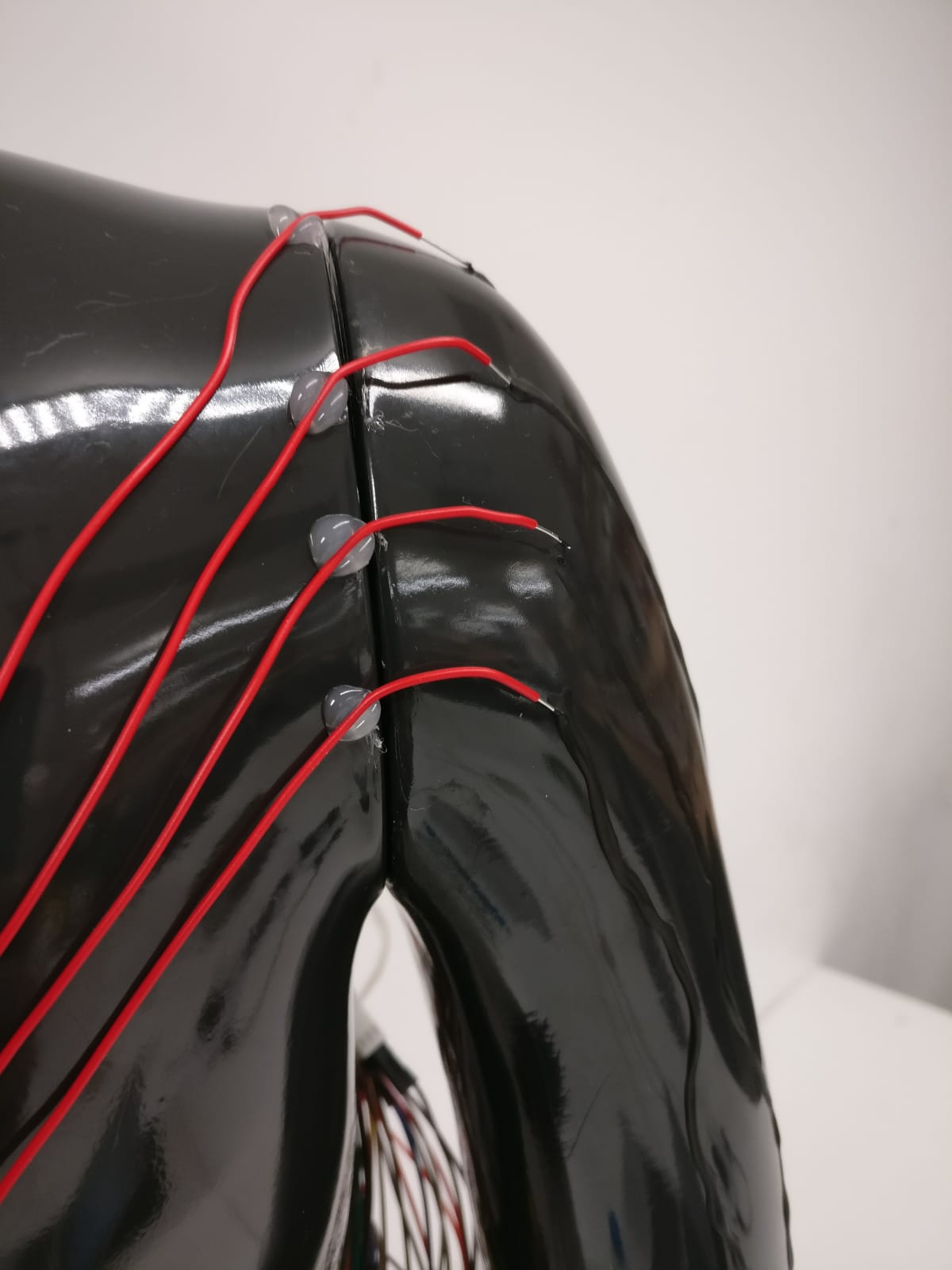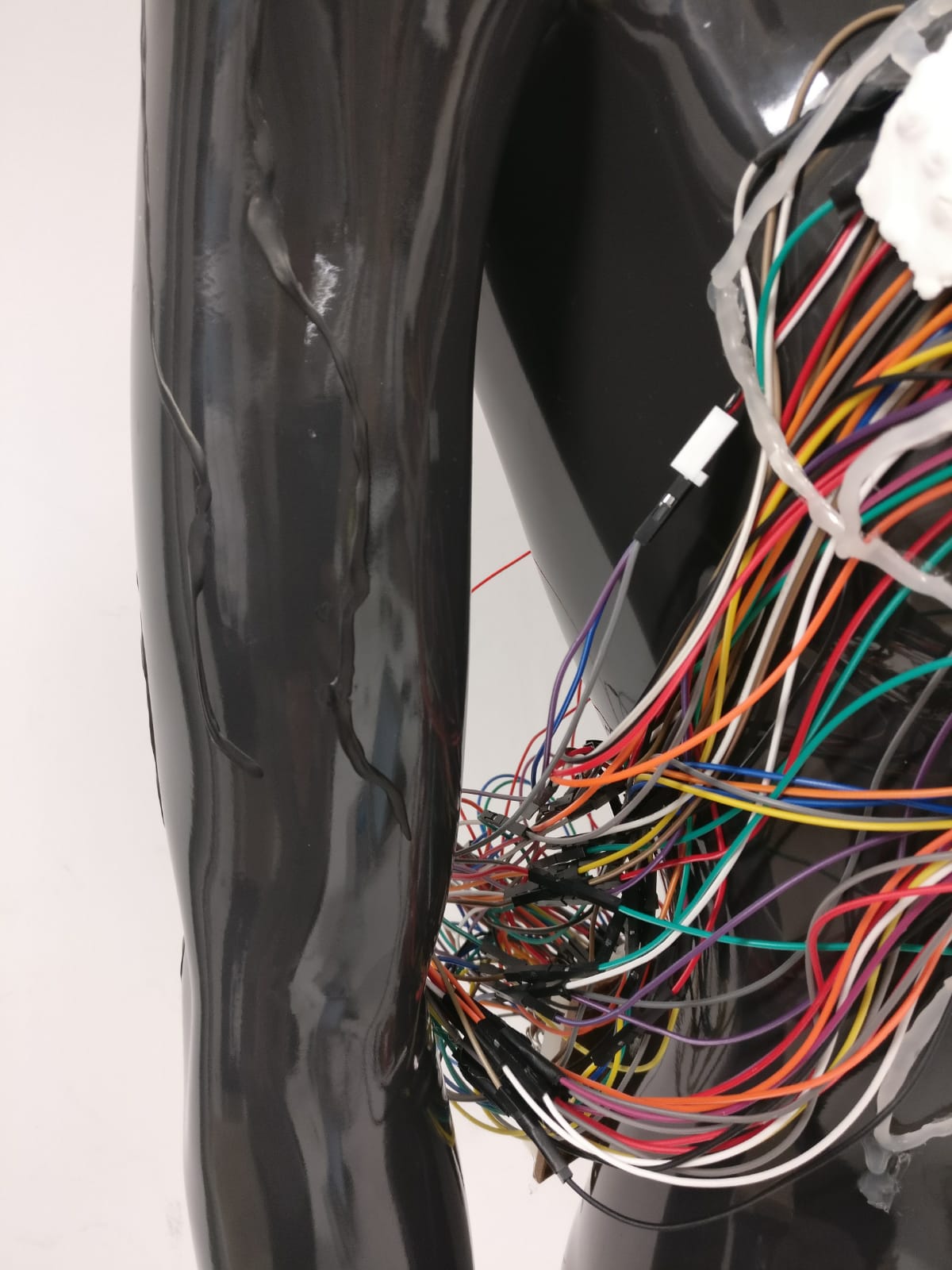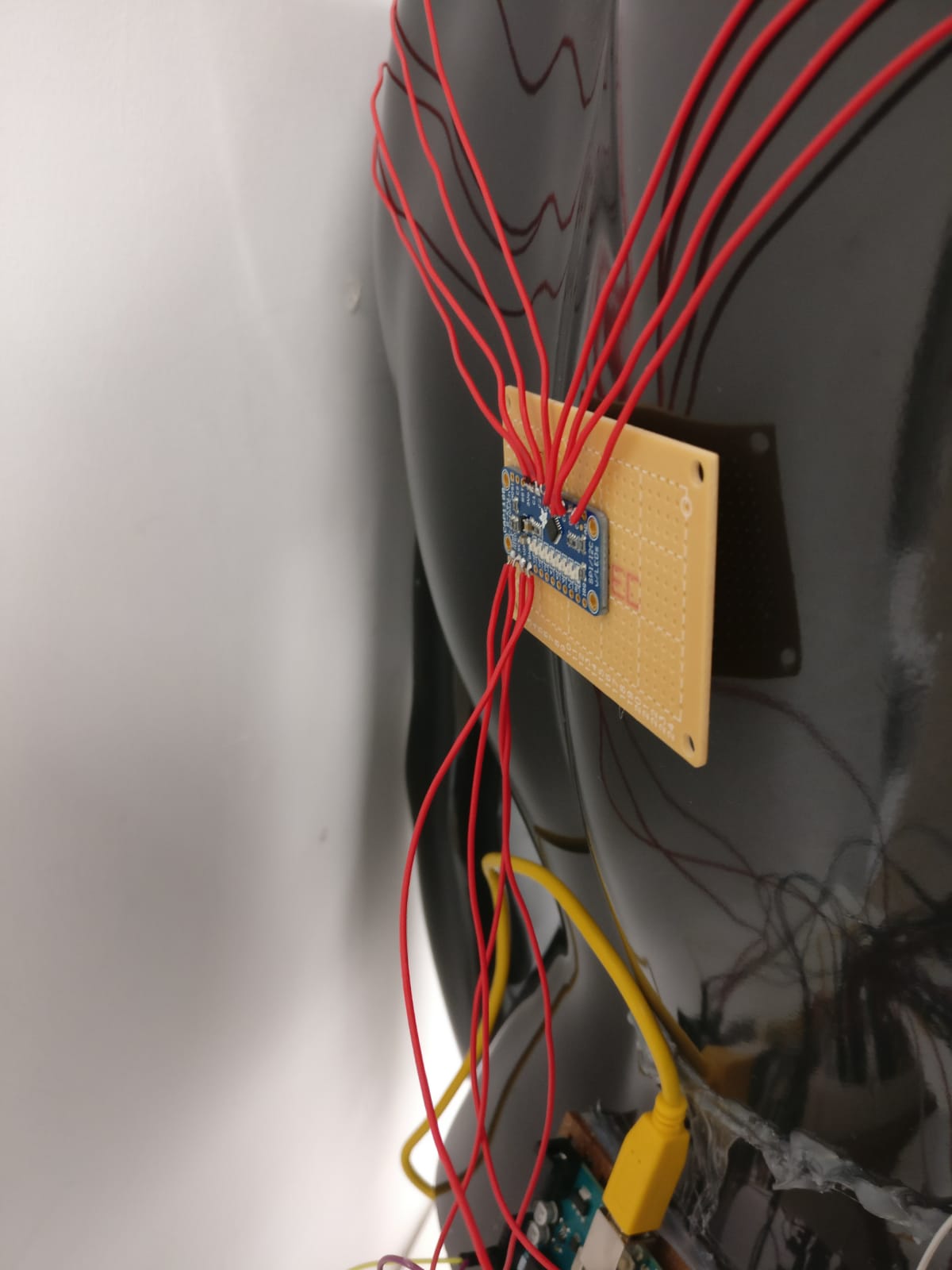Solace
Solace is an interactive sculpture that centres around the visualisation of internal pain and trauma. Pain, both physical and emotional, often has little external signs, in particular the pain relating to terminal illnesses such as cancer. Depicting pain as a tumours growth on the body, Solace juxtaposes the associations of disgust when thinking of disease, with an immersive interactive light displays that is produced when the figure is touched on the arm at various points on the conductive veins. This motion brings to light how touch can cause pain, but also act as a comfort to console others when in emotional or physical distress.
produced by: Emma Dutton
Design and Process
The sculpture was created using clay topped LED light cells, diffusing the coloured light at different rates. The cells are then fixed together to create the tumour, situated around the lung. Using a servo motor, the tumour slowly breathes in and out, creating a rhythmical audio visual ambience.
The interactive component of the sculpture comes from the conductive veins running down the arms of the figure. This is controlled using an Adafruit 8 key capacitive touch chip with wires up to the shoulders, and then conductive paint flowing down the arms.
The sculpture has two settings, ‘display mode’ and ‘interactive mode’. When there is no touch coming from the arms of the figure, it will be in display mode. This means that the LED cells will glow at different intervals, to give the appearance of the tumour growing whilst the servo motor brings the pieces together to create a larger tumour, indicating growth over time. In this way, one of the senses that this sculpture valises is the sense of time, as the tumour will seemly develop over time.
As soon as a participant touches the arm of the sculpture, it changes to ‘interaction mode’. Each vein in the arm is linked up to a different set of LEDs, and when there is touch on that vein, it will change the formation of the light pattern. In doing so, each interaction between the participant and the sculpture will create a unique display, showing a symbiosis between the qualities of both pain and healing in touch.
References
Lilianelijn.com. (2018). Lilith, 2001 – Liliane Lijn. [online] Available at: http://www.lilianelijn.com/portfolio-item/1724/ [Accessed 16 Dec. 2018].
Lilianelijn.com. (2018). Woman of War, 1986 – Liliane Lijn. [online] Available at: http://www.lilianelijn.com/portfolio-item/woman-of-war-1986/ [Accessed 16 Dec. 2018].
Van der Kolk, B. (2015). The body keeps the score: Brain, mind, and body in the healing of trauma.









































































